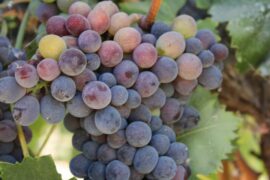When delving into the world of sparkling wines, it’s crucial to understand that “Champagne” is not a type of grape but rather a designation for a specific style of sparkling wine produced exclusively in the Champagne region of France. This distinction is essential for appreciating the complexity and tradition behind this celebrated beverage.
Champagne is crafted primarily from three grape varieties:
- Chardonnay: This white grape is renowned for its crisp, refreshing qualities and its role in creating the elegant, refined character of Champagne. Chardonnay often imparts flavors of green apple, citrus, and sometimes a subtle, creamy or toasty note, particularly if the Champagne has undergone extensive aging.
- Pinot Noir: A red grape variety, Pinot Noir contributes to Champagne’s body and structure. It brings flavors of red fruits like strawberry and raspberry, and adds depth and richness to the wine. This grape helps balance the lightness of Chardonnay with its fuller, more robust profile.
- Pinot Meunier: Another red grape, Pinot Meunier is less commonly discussed but equally important. It adds fruity, floral, and sometimes slightly spicy notes, enhancing the overall complexity and roundness of the Champagne.

The production of Champagne involves a meticulous process known as the méthode champenoise or traditional method. This includes a secondary fermentation in the bottle, which produces the characteristic bubbles. The wine undergoes aging on its lees (the dead yeast cells) to develop its flavors and texture.
So, when discussing Champagne, it’s vital to recognize that while it is made from Chardonnay, Pinot Noir, and sometimes Pinot Meunier grapes, the term “Champagne” itself refers to the sparkling wine and its specific production method, not a grape variety. Understanding this distinction helps appreciate the craftsmanship behind each bottle and the unique characteristics that come from this prestigious French region.





















































